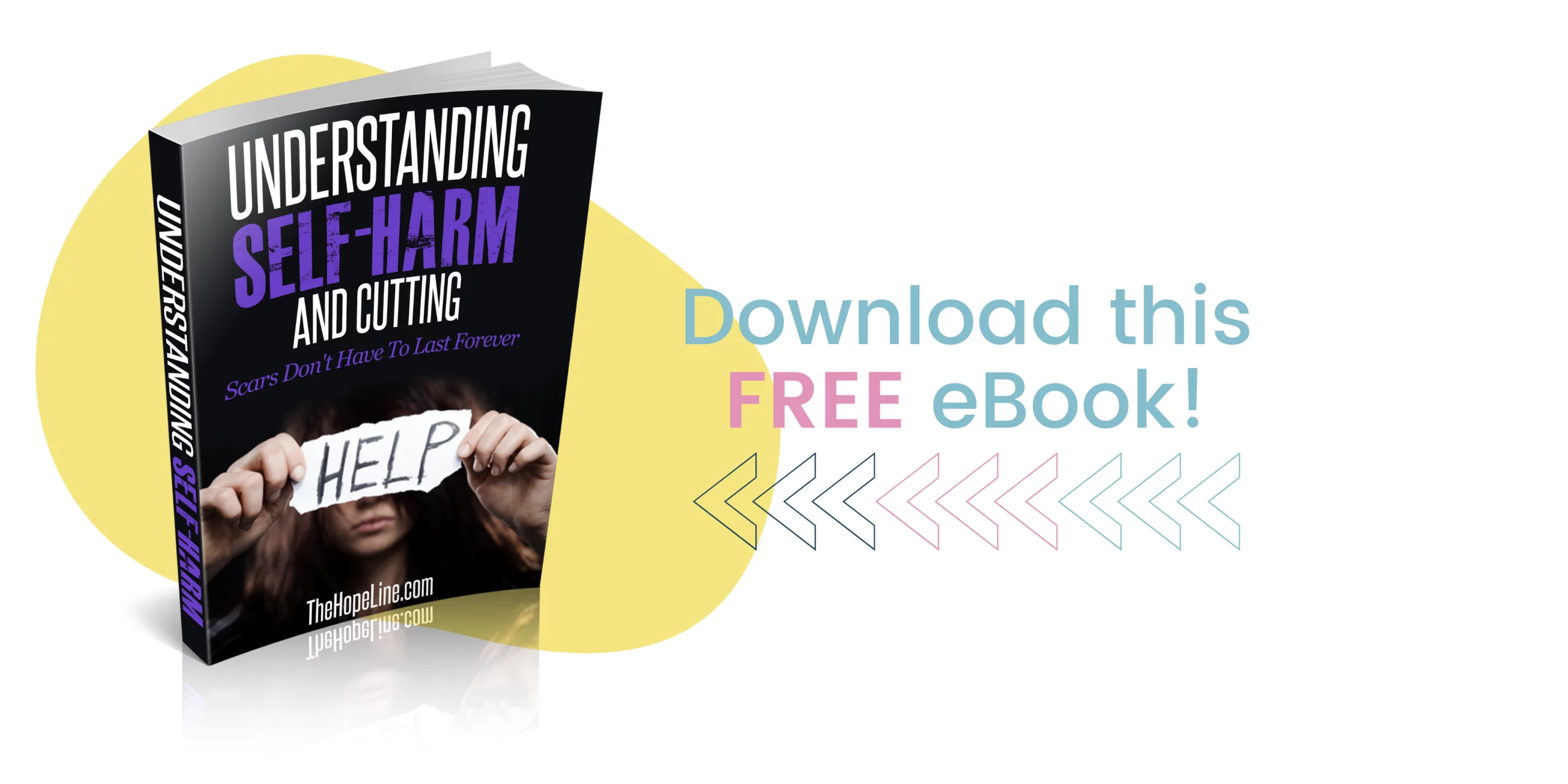How to Recover From Self-Harm
Why We Seek Out Pain and Ways To Redirect
Remember that kid in elementary school who always wanted to show you a trick? You said you had a headache, and he said, “Give me your hand.” He took your hand and pinched the nerve between your thumb and pointer finger. It hurt! But then your headache was gone. He interrupted the flow of incoming and outgoing messages in your nervous system, and in this case, it caused legitimate relief. Was that self-harm? Or was it just a legitimately cool way to bypass your brain’s sensation of a headache? What about other kinds of aches? Can physical pain stop those too?
Dealing With Guilt
Listen, we’ve all made mistakes. Big ones. Especially those of us who think we haven’t. And dealing with the guilt, that warm wash of “oh no, what have I done, things can never be the same,” no matter how many hours, days, or years it is in the past, can be its own kind of headache, heartache, or even full-body ache. When that state of overwhelm is too much, there are only a few things that our panicked brains can think of to change our situation. Pain is one of them. Because our brains know it works!
The Difference Between Hurt vs. Harm
But what is actual self-harm? Is all pain harm? When you cause yourself pain of any kind, are you officially self-harming? It depends!
Our pal Dictionary.com defines hurt as feeling or causing “bodily or mental pain or distress.” Sounds like pinching the nerve in your hand, right? The definition of harm includes the word “damage.” That sounds lasting, permanent. The idea that hurt and harm are two very different things is a huge topic of discussion in the psychology world. But how do you tell whether or not you’re self-harming? The answer lies in your intent.
Let’s say, you run every day, intending to stay active and maybe get a little alone time. It hurts, because running is hard! But then it causes lasting benefits to your physical and mental health. That’s not self-harm.
On the other hand, you might run every day with the intention of burning an unreasonable number of calories because you feel ashamed of your body. You’re running so much that you’re injuring your ankles and knees without giving them proper time to heal and recover. You’re running no matter what, even if it makes you late to work, gets in the way of your social plans, or even robs you of sleep. That sounds like you’re causing permanent damage to yourself. And it sounds like you’re doing it on purpose.
Then there are the much more obvious forms of self-harm like cutting and drug abuse. It’s very difficult to ignore that slicing yourself with a blade or sticking a needle into your vein is causing permanent damage to your body, and the feeling of practicing those behaviors repeatedly is also causing permanent damage to you psychologically, whether you’re practicing these rituals as a form of self-punishment or as a form of relief.
The Difference in Guilt vs. Shame
If you’re feeling the urge to self-harm in moments when you feel guilty about your past, there are a couple more definitions we should look at to help you figure out how to stop.
Brene Brown talks about the difference between guilt and shame in her extensive works on emotional health. Guilt is a useful feeling that triggers us to examine whether a recent behavior lines up with our values. Did you cut someone off in traffic? Guilt triggers you to remember that you don’t actually mind sharing the road, so next time you might be a little more patient. Did you spend a little more on groceries this week than usual? Guilt triggers you to remember that you decided on a budget that you actually respect, so next time you might be a little less impulsive. Shame is when you start to internalize all these “mistakes” as proof that you are a crappy person. Shame stays with you after the guilt passes. Guilt is that temporary pinprick of hurt that is ultimately helpful. Shame is that lasting pain that causes real damage if you don’t address it.
Why Pain Does Not Heal Pain
When we feel worthless, despairing, or angry with ourselves about things we’ve done or said in the past, it can be hard to imagine anything can fix that. You can’t time travel and take back your action. You’re “stuck” with this memory and this shame eating you up from the inside out, and it makes perfect sense that your body or brain might seek out a different form of pain to cope. But look back to that definition of harm. Causing yourself harm will not heal your pain. It causes, by definition, more harm, in the end. If you’ve fallen into the pit of self-harm as a way of dealing with your shame, and you want to stop, please know that it’s possible.
How to Redirect Self-Harm
When those waves of overwhelming pain wash over you, and all you want to do is reach for your favorite self-harm routine, here are a few ideas that may help you stop.
1. Address the source. In that moment where you’re feeling the urge, ask yourself: is this guilt or shame? If you can isolate whether you’re overwhelmed by guilt because you failed a test or shame because you feel like a terrible student, you can actually understand the urge you’re having and why.
2. Tell a friend. Often our self-harm routines are things we practice in secret. We would never do them in front of witnesses. So if you’re really struggling, tell a friend. Sometimes, merely speaking the urge aloud to another person can quell the desire. Or maybe you can ask your friend to come over, if you know you won’t do it with a friend present. A little bit of accountability and company can go a long way.
3. Lean on a counselor. There are people out there trained to help you with this, ready and willing to give you the support you need. Look up the numbers for your local self-harm hotlines, or check out our self-harm recovery partner Door of Hope, so you have someone to call or text in the heat of the moment. Lean on resources like TheHopeLine as much as you need to.
4. Remove the temptation. Depending on what your form of harm is, cut off your access to the tools you use. If you’re over-exercising, give your running shoes or other equipment to a friend, spouse, or parent. Tell them not to give them back to you unless it’s for a healthy, planned workout. If you’re cutting, throw away your blades or give your razor to a friend or spouse. Ask them if you can start shaving in their bathroom when you need to so that those blades aren’t around when you’re alone anymore.
5. Give your body something else to do:
- Say things out loud. Naming things is a powerful practice. Simply saying aloud, to yourself or another person, such as, “I just remembered that one time I got too drunk at a party, and I’m feeling like a worthless idiot who shouldn’t be allowed to have fun. All I want to do is cut, but I am not going to because I’m trying to stop,” is a POWER move. You might feel crazy for talking to yourself, but do it! Your brain needs you to own what’s happening.
- Exercise (but healthily). Getting your heart rate up can help in all sorts of ways, from getting more blood in and out of the brain for better cognitive function to producing those famous endorphins. Just make sure you’re not turning the exercise itself into a form of self-harm.
- Breathing practices. Get on YouTube, Instagram or TikTok and find yourself some calming breathing practice videos to follow. Similarly to exercise, breathing can change up the heart rate and blood flow in ways that may help relieve the overwhelm of your shame or guilt.
6. Practice. Self-harm becomes habitual because it’s a behavior we practice over and over and over. It can be addictive because of the legitimate chemical reactions it causes in the brain. Stopping self-harm is a process. It’s going to take repetition for your brain to unlearn that harm is what we reach for when we feel guilt or shame. And just like when you’re practicing any other skill, you’ll probably make mistakes along the way, but that doesn’t mean you aren’t making progress! Practice.
Freedom From Shame
And finally, forgive yourself. The only way to truly get out from under self-harm is to stop feeling that shame and guilt. To believe, as Jesus does, that you are irrevocably worthy of love and respect, because you are a divine creation. Talk to Jesus. Believe that healing, not further harm, is what He wants for you. Take His assurance of love and acceptance as grounds to forgive yourself each time you feel that wave of guilt or shame.
Here is a resource that will help you gain a greater understanding about God’s love for you and His ability to care for you… and as always Hope Coaches are available 7 days a week if you need to chat.



